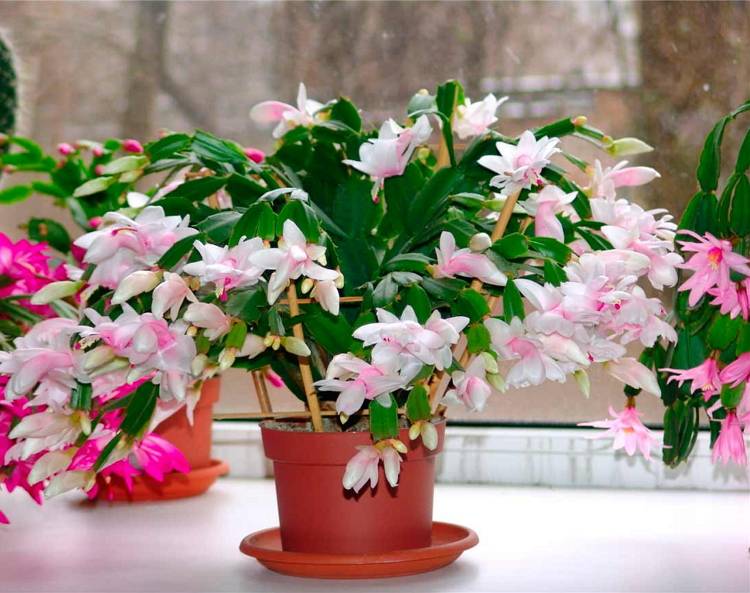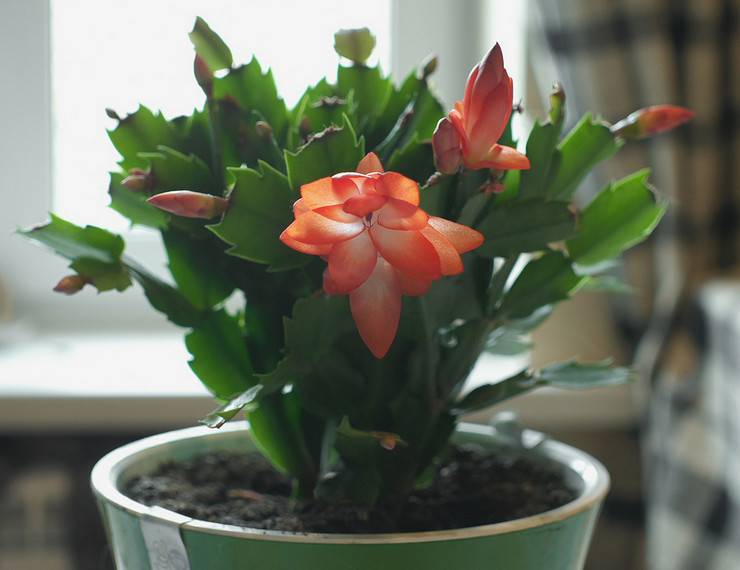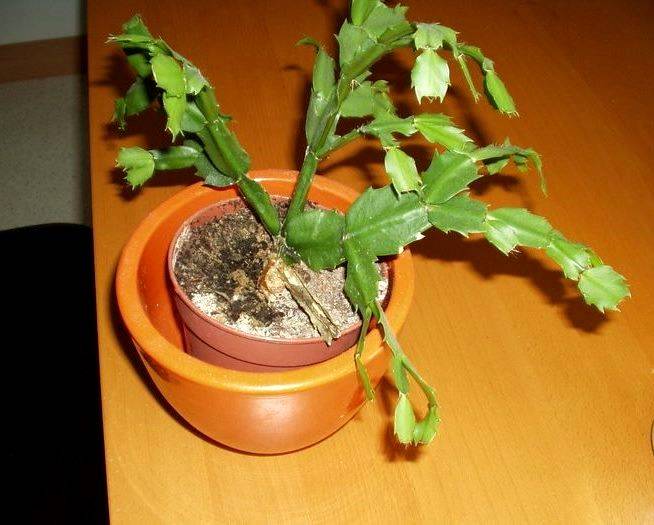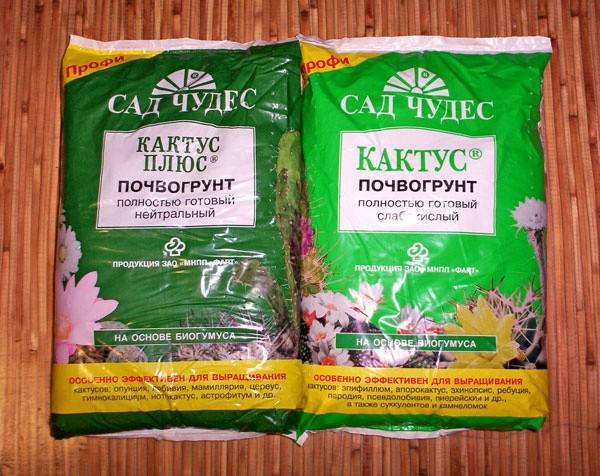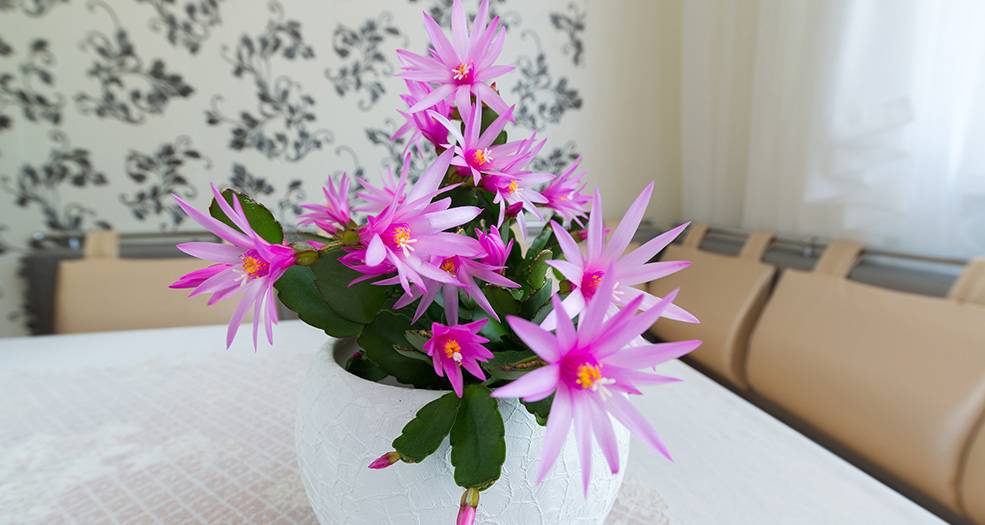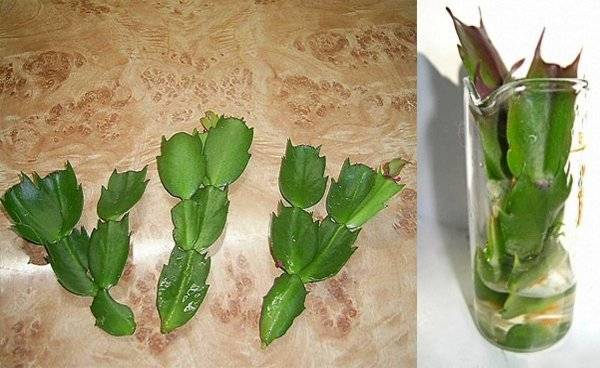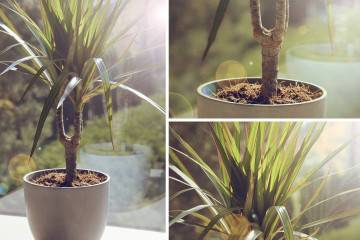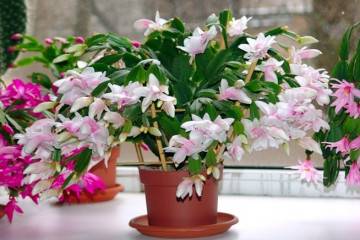How to transplant a Decembrist at home into a new pot
Content:
The Decembrist (Zigokaktus, Schlumberger, "forest" or "Christmas" cactus) has long become a favorite of many flower growers around the world. A plant every winter can delight its owners with lush and bright flowering, without requiring complex care. Late or early, the Decembrist will need a transplant. The process of transplanting a flower has its own nuances, non-observance of which can harm the plant.
When do I need a transplant?
A transplant is mandatory for all home flowers, thanks to this procedure, the plant begins to grow and bloom more actively. However, any transplant causes stress on the plant, so it is always necessary to take into account the characteristics of each specific variety.
When to transplant a Decembrist at home? The flower is transplanted in several cases:
- the first transplant is done immediately after purchasing a plant in a flower shop;
- planned transplant;
- an emergency transplant is necessary if the flower is damaged by diseases or pests.
Florists who grow a "Christmas" cactus have a question: when to transplant the Decembrist? The main signal for the start of transplantation is the appearance of new light-colored leaves-segments. When to transplant the Decembrist? The spring months are the best times for this process. In spring, the air temperature rises and daylight hours increase. For the Decembrist, these changes are beneficial, because such weather conditions are very similar to "native" ones.
By spring, the period after flowering ends, the plant enters an active vegetative phase: metabolic processes are accelerated, due to which new cells are formed and the growth of leaf mass is activated. Thanks to the combination of these factors, the plant copes with stress after transplanting without any problems. When transplanting a Decembrist in the spring, the plant will have six months to receive the necessary portions of light and heat necessary to recover before the flowering period.
During summer and autumn, new segmental leaves grow, the Decembrist begins to prepare for the upcoming flowering, and winter is the time of lush flowering, therefore, in summer, autumn and winter, it is worth refraining from transplanting. When transplanted in summer and autumn, the "Christmas" cactus may not only fail to bloom on time, but there is a risk that it will shed all the foliage. The only exception to transplanting in these seasons may be damage to the flower by pests or diseases.
How often to replant the Decembrist?
The age of the flower is the main factor in the frequency of transplantation. In the first three years, there is an active growth of the Decembrist, therefore, the younger the plant, the more often it needs to be transplanted. It is recommended to replant young flowers once a year, plants aged from three years - once every three years, older ones - once every four years, old ones - once every five years. The "Christmas" cactus has a very delicate root system, so healthy adult Decembrists do not need frequent transplants, as they can cause significant stress to the flower, it is enough to simply renew the topsoil if necessary.The main sign that the time for transplanting the plant has come and the Decembrist needs a larger container - roots crawling out of the holes of the pot.
How to choose a pot and soil?
The choice of a container for transplanting a Decembrist is one of the important factors for the future development of a plant. The Decembrist has a superficial root system, which means that the roots grow more in breadth than in depth. Therefore, a shallow but wide container is suitable for a flower. You should not choose a pot that is too large, as the plant will try to fill the entire volume of capacity with the root system and it will not have the strength to bloom. When transplanting a Decembrist into a deep container, in the future there is a risk that the water will stagnate at the bottom and waterlogging of the soil will occur.
The recommended size of the container for the transplant is one tenth (about 2-3 centimeters) larger than the previous one. Suitable pot materials for a "Christmas" cactus are plastic, ceramics and clay. The plastic container maintains a constant soil temperature, the plastic itself has the ability to absorb excess moisture. The main advantages of ceramics and clay are their environmental friendliness. What kind of pot is needed for a Decembrist flower: the choice is up to the florist. In order for the soil in the container not to overheat, it is desirable that it be light in color.
What kind of soil to choose for the first and planned Decembrist transplant? The flower loves soil saturated with organic substances, loose and moisture-permeable soil, with a slightly acidic level of acidity, which should not be higher than pH = 6.0. Garden soil will definitely not work. The flower shops sell a special substrate marked "For cacti". The composition of the substrate includes the following ingredients: nutrients, coarse river sand, humus and peat.
You can prepare the soil yourself. Below are three soil options for the Decembrist. For this you will need
- land from the garden, coarse river sand and peat in a ratio of 1: 1: 1/2, respectively;
- leafy soil, sod soil, coarse river sand and peat in a ratio of 2: 1: 1: 1, respectively;
- leafy and soddy soils, coarse river sand, humus in a ratio of 1: 1: 1: 1/4, respectively.
In self-prepared soil, you can add in small quantities: dry leaves, brick chips, vermiculite, small pieces of foam and coal, soil "For orchids", where bark and coal are present.
Soil disinfection
Self-prepared soil needs disinfection and sterilization. For disinfection, crushed coal is added to the soil. There are two ways to sterilize the soil:
- heating in the oven at a temperature of 200 degrees for half an hour;
- cooling in the freezer during the day.
Preparing for transplant
The pot and soil were purchased, it remains to prepare the flower itself for transplantation. First of all, the Decembrist needs to be put in order: manually remove the extra leaf-segments to give the plant a more attractive appearance. Removing extra segments will make it possible to form a lush bush, which in the future will delight with abundant flowering. After this procedure, the "Christmas" cactus must be thoroughly wiped with a small brush and rinsed under running warm water.
It is advisable to disinfect the place where the Decembrist grows, in order to destroy pests and prevent possible diseases.
Now everything is ready for a flower transplant!
Decembrist transplant methods
How to transplant a Decembrist? This question is interesting for many amateur flower growers. The process of transplanting a Decembrist is simple, but it has its own nuances. Before transplanting, you need to prepare:
- capacity;
- priming;
- drainage;
- a protective covering for the workplace that protects against dirt;
- a tool for removing damaged roots;
- soil compaction shovel
- Activated carbon;
- alcohol.
Transplanting a Decembrist at home includes the following steps:
- fill a third or a quarter of the transplant container with drainage;
- add at least one centimeter of soil and level;
- loosen the soil in the pot, from which you need to extract the Decembrist;
- gently get the flower along with an earthen lump, grabbing it at the base of the trunk;
- shake off the old earth from the roots;
- remove damaged roots;
- rinse the root system and dry;
- place the plant in the center in a new pot;
- fill the container with new soil;
- install the Decembrist evenly;
- lightly compact the soil;
- place the plant in a permanent place;
- on the third day, make the first watering with a small amount of warm water;
- after watering, gradually fill the pot with soil.
The Decembrist can be multiplied. To do this, it is enough to unscrew the plant segments with two or three leaf segments. Reproduction is best done after the flowering period. There are two methods for germinating roots on cuttings: in soil and in water.
Reproduction in water includes the following steps:
- dry the pieces of the Decembrist with leaf-segments for three hours;
- place the lowest petiole in water;
- when the water becomes cloudy, it must be replaced with a new one by adding one tablet of activated carbon, and the stalk itself is washed with running water.
Step-by-step instructions for propagating a "Christmas" cactus in soil:
- dry the cuttings of the Decembrist;
- place plant segments with leaf segments by a third in a suitable soil to a depth of 2-3 centimeters;
- when the air temperature is cold or hot and the humidity is insufficient, the cutting is covered with a jar; under good conditions, it is not necessary to cover;
- when covered with a jar, the plant requires daily airing to avoid the development of fungus, which can lead to the death of the cutting.
Care after plant transplant
During the transplant, the Decembrist experiences stress, therefore, after this procedure, he needs peace and special care. Plant care instructions after transplanting:
- to restore normal operation of the root system for two weeks, the flower must be placed in a shaded cool place;
- during the first two weeks after transplanting, spraying with warm water from a spray bottle is required;
- after three days, make the first moderate watering with warm water;
- after watering, add soil to the pot until it is full;
- after transplanting, do not feed for the first 1-2 months;
- after successful survival of the Decembrist, you need to pinch each shoot in order to improve future flowering.
For a "Christmas" cactus, it is desirable to create conditions close to the "family". The Decembrist is comfortable with average indoor humidity and weekly spraying, temperature regime: 16 ° C-18 ° C - in winter, 23 ° C-26 ° C - in summer. Watering the plant directly depends on the temperature regime. Winter watering must be done with caution. In the summer, the Decembrist is recommended to water once a week, at high air temperatures (over 35 ° C), the number of waterings is reduced due to the risk of decay of the root system, frequent spraying is carried out. Water the plant with warm, settled water.
In summer, the flower must be protected from direct sunlight, kept in a shaded place and sometimes taken out into fresh air.In order for the growth of leaf segments to take place evenly, about once a month the Decembrist needs to be turned in different directions to the light source.
Twice a month, the plant is fertilized with a top dressing intended for cacti. Watering with fertilizer is carried out on moist soil so that the roots of the Decembrist do not "burn out".
Transferring from the shipping pot after purchase
Decembrists most often come to flower shops from the greenhouses of Holland. Greenhouse peat is not suitable for growing a flower at home; in such soil, the "Christmas" cactus can die. Therefore, immediately after purchase, it is necessary to transplant the plant into a properly selected soil. How to transplant a Decembrist into another pot?
Necessary steps for the first Decembrist transplant:
- remove the plant from the shipping container;
- remove all peat with a toothbrush;
- inspect the flower for diseases and pests;
- transplant the Decembrist into a new pot with suitable soil.
Typical transplant errors
When transplanting a Decembrist, novice flower growers often make mistakes, some of them can even lead to the death of a flower. Examples of the most common transplant errors:
- improperly selected pot;
- transplanting a plant during the flowering period;
- watering immediately after transplanting;
- choosing a "home" for a flower in direct sunlight.
With improper care, growers may face some problems. Problems, their causes and solutions:
- with the wrong watering regime, the root system may begin to rot. Slight decay of the roots is removed with a disinfected sharp knife, the cut points are treated with activated carbon. If the rot has struck a large volume of the root system, it is necessary to cut the flower with subsequent propagation;
- when exposed to direct sunlight, the Decembrist fades. The plant pot needs to be moved to a more comfortable place;
- if you do not disinfect the tool and homemade soil, you can bring in a fungal infection;
- when the roots are injured, the stems may die off, which must be removed;
- with improper care, the shoots will grow poorly;
- if at the beginning of autumn the Decembrist does not organize rest at a temperature of about 10 ° C and with a complete lack of watering, in winter the plant may not bloom;
- after the buds appear, the "Christmas" cactus is not recommended to be transferred from one place to another.
Transplanting a Decembrist is an easy task. By following the instructions, any grower can deal with it by preparing the correct container, soil and tools. The Decembrist can live up to 30 years, and with proper care, every winter for a long time will delight its owners with lush and bright flowering.
